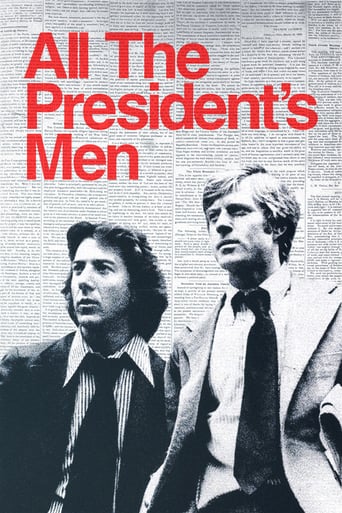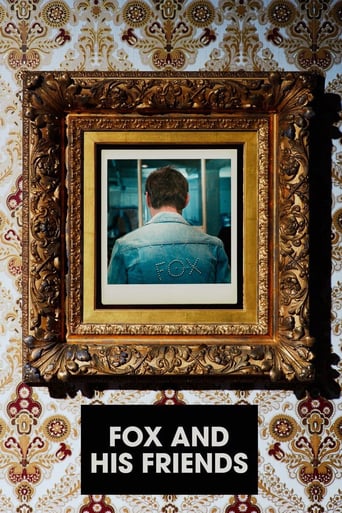
When I was a young lad living in Canada in the 1970s, the word “Watergate” became a name that was at the same time important and incomprehensible. Everyone knew that it involved the White House and President Nixon, but not a lot of people in the public understood why or even what it was about. The scandal was disclosed by two Washington Post reporters in 1972, and it is a testament to Alan J. Pakula’s film, based on the novel written by the two journalists, that at the end of it, the severity of the crimes revealed, while still not made very clear, are understood as being important and worthy of discovery. In addition to that, Pakula’s “All the President’s Men” is a superb discourse on honest journalism and its importance to Western democracies.
The two journalists are Bob Woodward (Robert Redford) and Carl Bernstein (Duston Hoffman). The movie begins with the break-in and attempted bugging of the US Democratic National Committee headquarters in the Watergate hotel complex. On the night of the break-in, a newly hired journalist, Woodward, is assigned to run the story. During the arraignment of the burglars, he notices some expensive, mysterious lawyers attending the proceedings. By connecting these lawyers to an employee of President Nixon’s White House counsel, Woodward has his curiosity peaked and starts to investigate. He is given an initial green light to follow up, and the more experienced reporter Carl Bernstein (Dustin Hoffman) is assigned to help him in the investigation. The movie then expertly tracks the journalistic investigation process, which in general requires long, tedious, repetitive work. It is to the movie’s credit that this process is not hidden but rather showcased in the film. It is also a credit to Pakula that his direction and eye for detail succeeded in making this process interesting. Since everyone in 1976 knew the result of the investigation, this is not a mystery in any sense, which made it that much more difficult to retain the interest of the viewer.
It is Pakula’s experience in directing thrillers and his success in instilling a thriller mood throughout the movie that prevent the movie from being boring. For example, there is one scene that has Woodward running from one side of the newsroom to the other that instills urgency and suspense while at the same time emphasizing the intellectual energy of a newsroom. I am not sure if it is factual, but placing Woodward’s desk not close to Bernstein’s desk also allowed for a lot of dramatic motion that helps punctuate a thrilling element to the art of investigative reporting. Today, with the internet and cell phones, this type of physical action within the stationary act of journalistic investigation would not have been possible, making the movie not only a depiction of how the scandal was discovered but an historic document on how newspapers worked during their glory days and before technology took over. The fact that Pakula and his set designers created a close duplication of the actual Washington Post newsroom is part of the fascination with this movie as a superbly made true-life story. It also helps that the movie tells a story that occurred only a few years before the movie came out, which allowed its topicality to be fresh with the audience. Today, that element is missing when watching the film.
Pakula was greatly aided in his movie by the all-star cast headlined by Redford and Hoffman’s understated performances. Their ability to instill in me a belief in what I was watching—real people—helped to build tension. Since it was obvious how the movie would end, it was vital for the movie to retain an important level of interest. It helped that both actors have charisma to spare and come across as being very likeable. However, it is the great actor Jason Roberts as the executive editor, Ben Bradley, who steals every scene he is in. Roberts is perfect in the role, as he initially becomes the enforcer of the need for iron-clad proof, who then, due to personal spite and great pride, gives the go-ahead to run the story. I am not sure if Bradley was such an impressive person in real life, but Robert’s impersonation of him honors him as an honest man instilled with authority and wisdom.
It is a shame that Pakula felt that he had to include some sort of threat of physical danger in the story. The journalist’s greatest source was a mysterious informant cryptically named “Deep Throat.” The actual disclosure of who “Deep Throat” was was only made in 2005, so when the movie came out, he was a famous mystery. A mystery that is retained in the movie. Pakula’s use of dark shadows that never reveal his appearance was made to emphasize his secretive nature. This trick adds to the thriller element in the story; however, I never understood why, near the end of the film, “Deep Throat” warned Woodward that his and Bernstein’s lives were in danger. This revelation came after the first articles were published, and any physical harm done to them would just add to the pressure of revealing the truth. I am sure that they were never in any danger, and this element seemed to me to be a misstep made by Pakula and the script writer. It was also not clear to me why “Deep Throat” would initially give cryptic hints to Woodward in an almost joyous attempt to make him work hard instead of just telling him what he knew. Only when it seemed that all was lost does Woodward get angry at “Deep Throat,” which forces him to reveal all his information. I thought that was a bit simplistic to be real. The reason for this could very well be that their interactions could not be truly revealed due to the need for “Deep Throat” to keep his identity secret.
“All the President’s Men” ends in an iconic scene where the two reporters are banging away at their typewriters while a small foreground TV set is broadcasting the inauguration of Nixon’s second term as president. The scene is without dialogue and illustrates perfectly what it is like to be an investigative reporter. While today phone calls and paper searches are replaced by computers and internet search engines, the ideas and processes being shown remain the same. This is a movie that superbly emphasizes how a free and honest press is one of democracy’s greatest achievements. With all the fake news being thrown around today, that is a very important and relevant message, making “All the President’s Men” an important and compelling movie.










